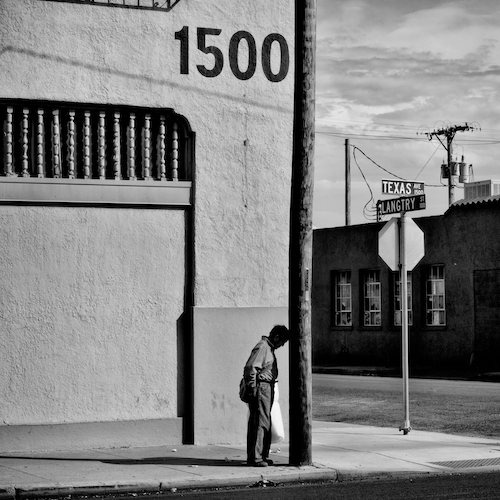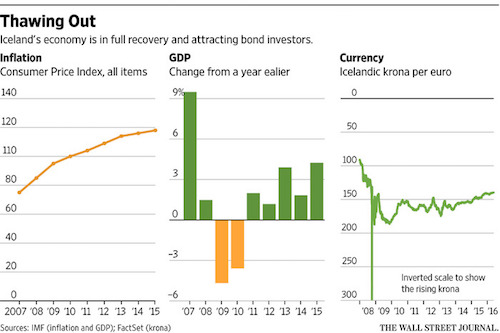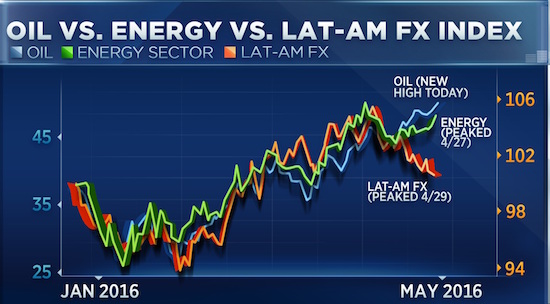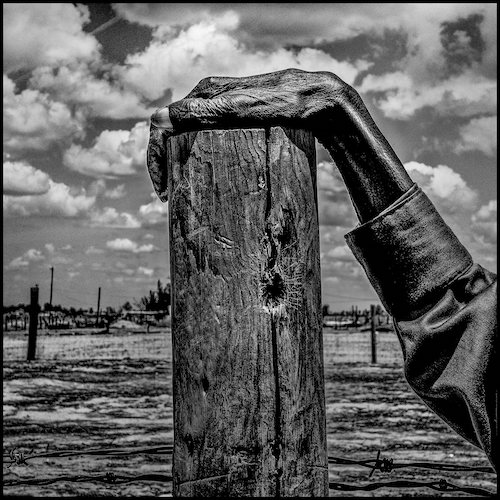
Matt Black/Magnum Photos USA. El Paso, Texas. 2015



Recovering from debt addiction: “We don’t need the money..”
• Iceland Puts Freeze on Foreign Investors (WSJ)
Iceland has spent eight years locking down its financial markets to keep foreign investors in. Now some are complaining the island nation is trying to shove them out. A law passed May 22 by Iceland’s parliament offers the foreign holders of about $2.3 billion worth of krona-denominated government bonds a Hobson’s choice: Sell out in June at a below-market exchange rate, or have the money they receive when their bonds mature impounded indefinitely in low-interest bank accounts. Investors, including Boston-based mutual-fund companies Eaton Vance and Loomis Sayles, a unit of Natixis, don’t want to go. They say they will reject the government’s offer. “We would like to stay invested,” said Patrick Campbell, a global bond analyst at Eaton Vance.
The dispute is the result of a wholesale turnaround in Iceland’s relationship with foreign investors. The country became synonymous with financial alchemy after its banks ballooned by borrowing in bond markets and attracting foreign depositors with high interest rates. That system imploded in 2008 when depositors made a run on the banks just as their bonds fell due, causing the krona to sharply devalue against the euro. Yet a growing number of fund managers are now buying Icelandic government bonds, including those that were marooned on the island when it applied capital controls. The country is now one of the few offering a combination of high interest rates and strong economic growth prospects.
Eaton Vance and another holder of the legacy debt, also called “offshore” debt, hedge fund Autonomy Capital LP, have been courting the government for months to allow them to keep their cash on the island, even offering to swap their holdings into long-term bonds that they would pledge to hold on to.But the country isn’t interested. Instead, officials behind the law say they aim to keep the $16.7 billion economy of the island with a population of 327,386 from being swamped anew by the ebb and flow of offshore funds. “We don’t need the money,” said Mar Gudmundsson, governor of Iceland’s central bank. “These are remnants from the last boom and bust, and we are not going to repeat that mistake.”


“..Japan “must reignite powerfully the engine of Abenomics”..”
• Japan’s Abe To Delay Sales Tax Hike Until 2019 (R.)
Japanese Prime Minister Shinzo Abe plans to delay an increase in sales tax by two and a half years, a government official said on Sunday, as the economy sputters and Abe prepares for a national election. Abe told Finance Minister Taro Aso and the secretary general of his ruling Liberal Democratic Party, Sadakazu Tanigaki, on Saturday of his plan to propose delaying the tax hike for a second time, until October 2019, said the official, who was briefed on the meeting. The prime minister, who has promised to announce steps on Tuesday to spur economic growth and promote structural reform, is also expected to order an extra budget to fund stimulus measures, just two months into the fiscal year and on the heels of a supplementary budget to pay for recovery from recent earthquakes in southern Japan.
After chairing a summit of Group of Seven leaders on Friday, Abe said Japan would mobilize “all policy tools” – including the possibility of delaying the tax hike – to avoid what he called an economic crisis on the scale of the global financial crisis that followed the 2008 Lehman Brothers bankruptcy. “There is a risk of the global economy falling into crisis if appropriate policy responses are not made,” Abe told a news conference after the summit. To play its part, Japan “must reignite powerfully the engine of Abenomics,” he said, referring to his easy-money policies aimed at getting Japan out of two decades of deflation and fitful growth. Abe has long said he would proceed with a plan to raise the tax rate to 10% from 8% next April unless Japan faced a crisis on the magnitude of the Lehman shock.
He said the G7 “shares a strong sense of crisis” about the global outlook, with the most worrisome risk being a global contraction led by a slowdown in emerging economies like China. Other G7 leaders, however, appeared to differ with Abe on the risk of a global crisis, fuelling comment that Abe was using the G7 to justify delaying the painful tax hike.

Interesting graph.
This week, oil broke above the key $50 level for the first time since October 2015. Yet rather than interpret the move as a sign to buy, one top technician is warning investors not to chase the rally. “I think it’s all about risk-reward and there’s probably no more important chart right now than the oil chart,” Chris Verrone, a technician at Strategas Research Partners, told CNBC’s “Fast Money” this week. According to Verrone, it’s the steepness of the move that bothers him most. In the past 72 days, oil has moved 20% above its 200-day moving average. “It looks excessive to us, we think there’s a higher likelihood you come back and retest the 200 near 39, 40 bucks,” said Verrone.
Also troubling to Verrone is the fact that while crude has surged to new highs, energy stocks and the Mexican peso — both of which are closely tied to oil — have not made new highs in a month. Energy names have fallen since peaking on April 27, whereas crude has surged 12%. Since peaking back April 29, the peso’s gains are still lagging those in oil. They are up 8% and 33%, respectively, this year. Indeed, analysts at Bank of America Merrill Lynch warned this week that continued strength in the dollar could trigger a series of knock-on effects that may push crude off its new highs. The bank said a “black swan event” such as Saudi Arabia removing its currency peg could lead to a collapse of Brent crude to as deep as $25 per barrel, and it expects oil prices to average $46 per barrel this year. On Friday, crude ended the session above $49 per barrel.


Pretty soon exactly zero people outside of the elite will want these deals.
• Trade Deals Going Nowhere (DR)
As the politics of this election year heat up, the chances of Congress debating — let alone passing — either of the White House’s marque trade deals continue to melt away. Oh, there’s plenty of talk about the westward-looking Trans-Pacific Partnership and the Euro-centered Transatlantic Trade and Investment Partnership, or TPP and TTIP, respectively. Most of the yakking, however, flows from Obama Administration officials; nary a word trickles out of Congress. Worse than Capitol Hill silence is the vocal pounding free trade takes when any of Obama’s would-be successors talk trade.
Bernie Sanders, a Democrat by name but socialist by heart, makes it crystal clear that he would rather eat glass than back “free” trade. Hillary Clinton, who three years ago called the TPP “exciting,” “innovative” and “ambitious,” now sees it as an agreement that has “failed to provide the basic safety net support needed” for American workers. Take that as an “innovative” no. And the Donald? He’s against TPP because, as he noted in one Republican debate this spring, “It’s a deal that was designed for China to come in, as they always do, through the back door … ” China, however, is not part of the Trans-Pacific Partnership, so whatever Trump meant must have been more of a “suggestion” than a fact. Whatever.
[..] Big Ag’s big push for the pending trade deals is understandable, given the two changed realities of today’s election year politics. First, even as we lean on the EU to alter its biotech food rules, the U.S. Senate still can’t agree on how to write a biotech food labeling law here. Members know the tide has turned on labeling; 89 out of 100 Americans want it. Majority Republicans, however, don’t and they continue to search for a way to be anti-labeling without becoming anti-incumbents. Second, not one presidential contender sees free trade as a vote-winning issue. Taken together, it’s hard to see how any trade deal goes anywhere this year. After that, you have to take the word of Hillary or Bernie or Donald. Well, maybe not Donald. Or Hillary. Bernie’s solid, though.

Entanglement is poorly understood, and poorly explained.
• Schrödinger’s Cat Gets a Playmate (CSM)
Schrödinger’s cat is something many of us have heard of, but perhaps fewer actually understand. The idea was first dreamed up by an Austrian physicist, Erwin Schrödinger, who wanted to illustrate the mind-bending nature of quantum mechanics. He created a thought experiment in this world to illustrate the point, which would allow a cat to be both dead and alive in a box at the same time. Now, scientists have added another box. And another cat. And the first cat being dead and alive simultaneously in the first box, so this causes the second cat in the second box to also be dead and alive at the same time. Makes perfect quantum sense, right? “It’s understandable that people don’t understand it,” lead author Chen Wang of Yale University told The Washington Post.
“You can’t understand it using common sense. We can’t either.” But here’s the premise: A cat sits in a box. Alongside the cat, there’s poison. That poison will only be released upon the decay of a radioactive subatomic particle. According to quantum mechanics, and specifically the theory of “superposition,” these particles actually exist in all possible states at the same time – until, that is, someone takes a measurement. At that point, the particle falls into a single, known state. So, the particles could be decaying, and not decaying, simultaneously. As a consequence, the poison is being released – and not released. And so the cat is both dead and alive. Until someone opens the box, of course, and is observed. Then, the cat can’t be doing both things at once.
What Dr. Wang and his team have done is to add another dimension: the concept of “entanglement.” This proposes that two objects can be intimately linked, even if billions of light-years separate them, and any change that happens to one will happen to the other instantaneously, a relationship Einstein once described as “spooky action at a distance.” For our cat, this means, quite simply, that there’s a twin, in another box. And everything that happens to one, happens to the other. In Wang’s experiment, there were no cats, just light. He used two aluminum cavities, each with a wave of light bouncing around inside. The researchers induced such a state so that the light existed in two different wavelengths at the same time, in both boxes.

‘Poverty Is Often Looked At In Isolation, But It Is An American Problem’
• The Geography of American Poverty (G.)

USA. Allensworth, California. 2014. Fence post. Allensworth has a population of 471 and 54% live below the poverty level. Matt Black/Magnum Photos
Last summer Matt Black left the Central Valley of California, where he lives, to travel 18,000 miles across the US on a road trip that took him through 30 states and 70 of the poorest towns in America. The startling image of a hand resting on a fence post against a barren backdrop was taken in the small town of Allensworth, California, where 54% of the population of 471 people live below the poverty level. “California always seemed special and unique in terms of how it symbolised promise and progress,” says Black, 45, during a break in shooting landscapes in Idaho, where he’s working on another stage of the same series, Geography of Poverty. “So it seemed somehow symbolic to begin there and travel east, but what has surprised me is the similarities I have encountered as I travelled from one community to another.
All these diverse communities are connected, not least in their powerlessness. In the mainstream media, poverty is often looked at in isolation, but it is an American problem. It seems to me that it goes unreported because it does not fit the way America sees itself.” As if to bear this out, Black tells me that the route he took was mapped out in advance using geotagged photographs found online alongside census information to identify the poorest areas. In each instance, the communities he visited were never more than a two-hour drive apart. “I was able to drive from California to the east coast and back without ever leaving these poor areas.” Black’s striking images are on show in a group exhibition, New Blood, at the Magnum Print Room in London…

USA. El Paso, Texas. 2015. El Paso has a population of 649,121 and 21.5% live below the poverty level. Matt Black/Magnum Photos

More tourists, more refugees.
• Miracle In Athens As Greek Tourism Numbers Keep Growing (Observer)
It’s been a busy winter in downtown Athens, where scaffolding, tarpaulins and dust have been symbols of hope: a mini construction boom heralding a tourist renaissance. Nine hotels are being built or restored around the city centre. Their arrival correlates with the huge upturn in holidaymakers visiting the Greek capital since a low point in late 2008, when Athens erupted into riots after the police killing of a teenage boy. “It’s a miracle, what’s been happening in Athens,” Greece’s tourism chief, Andreas Andreadis, told the Observer. “The tourist industry in Greece grew two to three times faster than in Spain, Portugal, Italy or France last year. This year we expect around 4.5 million visitors in Athens alone.”
For an economy stuck in depression-era recession, dependent on emergency bails and seemingly locked in a perpetual fiscal vice, tourism is vital. A record 23.5 million holidaymakers visited Greece in 2015 – generating €14.2bn in direct receipts, or 24% of GDP. In 2010, at the start of the country’s debt crisis – which has seen it struggle to avert default and remain in the euro – revenues from tourism were €10bn, or 15% of GDP. The Greek Tourism Confederation, Sete, is predicting another bumper season for an industry that has long been the single biggest contributor to the economy and job market. Arrivals could reach 25 million (27.5 million including cruise ship passengers), which is more than twice the country’s population. Economic recovery will depend on the sector to a great degree.
Andreadis said: “If we get 1.5 million more visitors it will produce an additional €800m in direct receipts. Such a positive kick that would come in the third and fourth quarters.” Much of the upsurge is linked to Greece’s safety record. Tourists are staying away from resort in Egypt, Tunisia, Turkey and elsewhere in the wake of high-profile attacks. Countries whose economies are also dependent on holidaymakers have suffered incalculable damage following a severe drop in arrivals. Travel advice from governments and fears of fresh violence are simply keeping tourists away. But other countries’ loss could be Greece’s gain. And it could not come at a better time: tourism provides one in five jobs in Greece, at a time when unemployment in the effectively bankrupt nation has hovered stubbornly around 25%. Youth unemployment stands at an astonishing 67%.

And Greece has no way of dealing with it.
• The EU Has Turned Greece Into a Prison for Refugees (Nation)
In the port-side café before the sun comes up, a group of men are talking. “In the beginning, when there were maybe 40 of them in the boats, all wet, we helped them. Now they’re too many. They steal chickens. They shit in the fields. They threw stones at a woman.” “Do you think it’s chance that they’re all coming here? The NGOs, the whatever they’re called, are making money off it. It’s a plan. A racket.” “Eventually they’ll set off a bomb and sink the island.” “Sink or float, what difference does it make? Are we happy, now we’re floating?” Chios, my grandfather’s island in the northeast Aegean Sea, has become an open-air prison for more than 2,000 refugees. Almost all of them arrived after the March 20 “statement” signed by the EU and Turkey, designed to stop the flow of people from Turkey to the Greek islands and then to mainland Europe.
The statement, which followed the unilateral closure by Central European countries of the western Balkans route, cut time and space like a guillotine, arbitrarily separating those who’d arrived before it from those who landed after, trapping more than 50,000 refugees and migrants in Greece. These late arrivals can’t leave the islands until their cases have been decided by the Greek asylum system, which is overloaded to the point of paralysis. The refugees are supposed to prove not only that they’re at risk in their home country but that they’d be at risk in Turkey, which the EU (but not Greece) considers a “safe third country,” if they want to have their asylum claim heard in Greece. Otherwise, they will be returned to Turkey.
Of the 8,500 women, children, and men who have landed on the islands since the agreement was signed, 400 have been returned so far, some to be detained for weeks without legal representation. About 200 have been granted asylum in Greece. The rest are rotting in overcrowded camps, “hot spots,” and locked detention centers, without information, adequate food, medical care, or security. And the boats from Turkey, though many fewer than before, continue to come in.

Are we going to keep acting as if this will stop when we simply look away?
• 13,000 People Rescued In Mediterranean In One Week (G.)
A flotilla of ships saved 668 people from boats in the Mediterranean Sea on Saturday, authorities in Italy said, bringing the week’s total of refugees plucked from the sea to 13,000 people. The rescues by the Italian coast guard and navy ships, aided by Irish and German vessels and humanitarian groups, are the latest by a multinational patrol south of the Italian island of Sicily. Warner spring weather has led to a surge of people attempting the perilous crossing from Africa to Europe. The Irish military said the vessel Le Roisin saved 123 people from a 12m-long (40-ft) rubber dinghy and recovered a male body. A German ship was involved in four separate rescue operations, the Italian coast guard said on Saturday evening.
Meanwhile, with shelters filling up in Sicily, the Italian navy vessel Vega headed toward Reggio Calabria, a southern Italian mainland port, bringing 135 survivors and 45 bodies from a rescue a day earlier. The Vega was due to dock on Sunday. Other survivors who arrived on Saturday in the Sicilian port of Pozzallo told authorities they had witnessed a fishing boat filled with“ hundreds” of people sink on Thursday, a Save The Children spokeswoman, Giovanna Di Benedetto, told The Associated Press by telephone from Sicily. According to survivors, two smugglers’ fishing boats and a dinghy set sail on Wednesday night from Libya’s coast. Di Benedetto said the survivors were among 500 or so aboard the one fishing boat that didn’t sink and the dinghy. “All of this must be verified, of course,” said Di Benedetto, but if the survivors’ accounts bear out, as many as 400 people could have drowned, with only a very few of those on the vessel that sank able to reach the other boats.

Not an isolated incident.
• Rescued Migrants Say Ship Sank Off Italy With Hundreds Aboard (R.)
Migrants rescued from two boats in the Mediterranean this week told humanitarian workers in Italy that they saw another vessel carrying some 400 migrants sink, Save the Children said on Saturday. Three vessels carrying migrants already are confirmed to have sunk or capsized this week. More than 60 bodies are said to have been recovered, including those of three infants, and hundreds are believed to be missing. But the possible sinking of a fourth vessel on Thursday had not been reported, said Giovanna Di Benedetto, spokeswoman for Save the Children in Italy. That ship along with another fishing boat and a rubber boat left Sabratha in Libya late Wednesday night, according to interviews on Saturday with some of the more than 600 survivors from the two other vessels in the Sicilian port of Pozzallo.
They said the rubber boat had its own motor, but the smaller fishing boat, carrying some 400 migrants, did not. It was towed by the larger fishing vessel, which held about 500 others. Eventually the smaller boat began to take on water and, when the captain of the larger boat ordered the tow line cut, sank with most of its passengers, the survivors told Save the Children. Those aboard the other two vessels were not rescued until much later. “There were many women and children on board,” the survivors said, according to Di Benedetto. “We collected testimony from several of those rescued from both (the rubber and fishing) boats. They all say they saw the same thing.”








